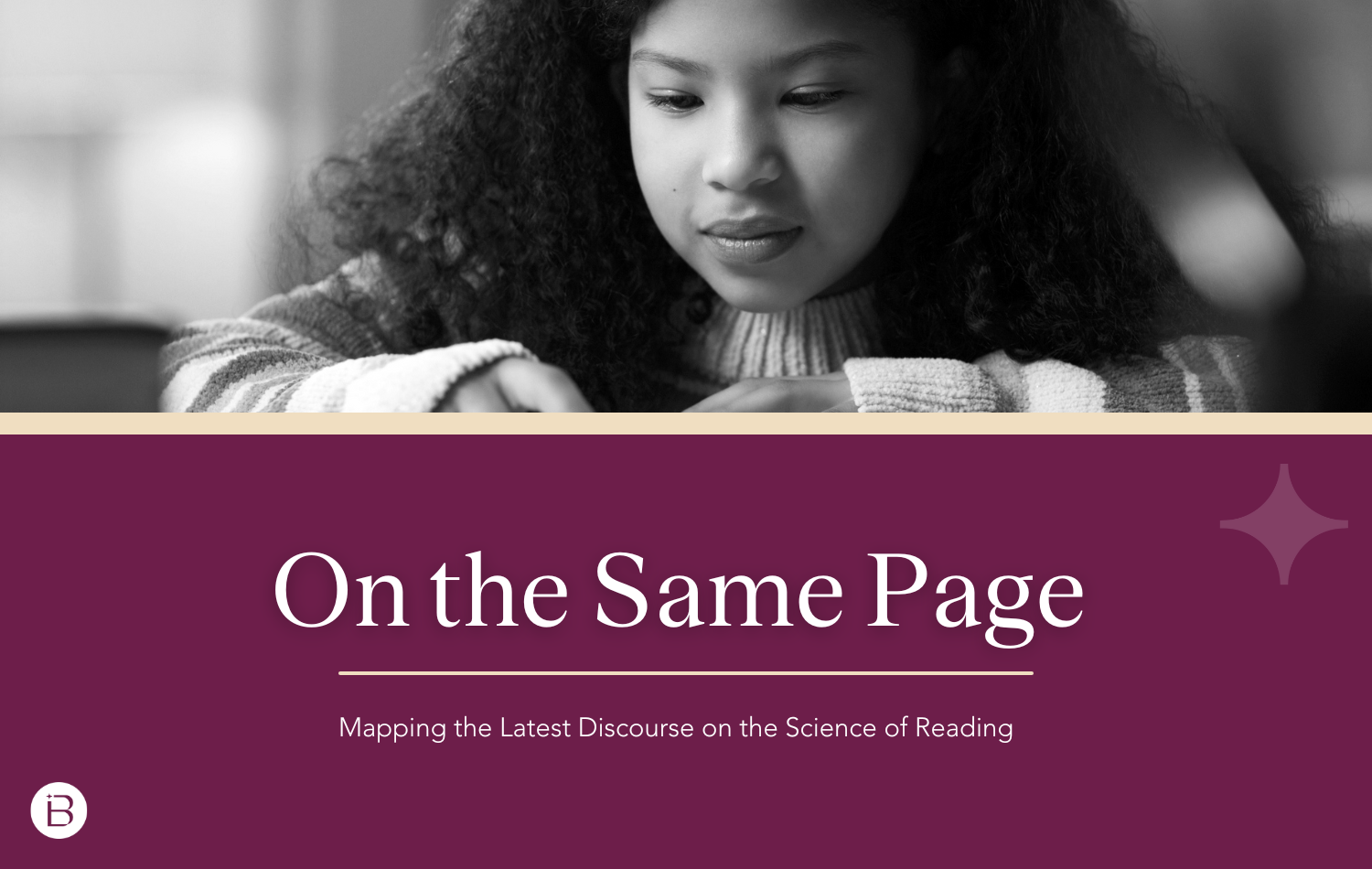In January 2024, my colleagues and I released a comprehensive analysis taking stock of the Science of Reading movement. In it, we established a fact base on past and present large-scale reform methods to improve K-12 reading instruction and traced the current rise of Science of Reading sector-wide. Since our report was published, the movement behind Science of Reading has gained momentum. States across the country have passed legislation or are in the process of passing legislation to guide or mandate the implementation of science-based reading instruction; parents and civil rights organizations have been campaigning for their districts to address reading gaps.
However, as we discussed in our report, the movement has not been without its challenges. Educators are struggling to balance phonics instruction, a key pillar of Science of Reading, with other aspects of students’ literacy development. Researchers and academics continue to write about effective reading practices that improve outcomes for students and warn stakeholders of the dangers of relying too heavily on phonics instruction. And, while states and districts have been adopting science of reading curricula, teacher instructional prep continues to lag.
Here’s a snapshot of Science of Reading developments and ongoing challenges across states and the broader discourse this year:
New York — Investments in Teacher Preparation Programs: In 2024, New York Gov. Kathy Hochul introduced the “Back to Basics” initiative, investing $10 million to improve statewide reading proficiency. The plan focuses on professional development for teachers in Science of Reading methods and includes standardized assessments to track student progress. This initiative highlights New York’s commitment to prioritize foundational literacy skills in early education, with the goal that by the 2025-26 school year (SY) all districts must certify with the State Education Department that their curriculum, instructional strategies, and teacher professional development fully align with best instructional practices.
Ohio — Statewide Comprehensive Reform: In a significant move, Ohio mandated the Science of Reading curriculum across all school districts for SY24-25. This initiative, championed by Gov. Mike DeWine, is supported by substantial state funding — $86 million for educator professional development, $64 million for curriculum and instructional materials, and $18 million for literacy coaches — and bans the outdated “three-cueing approach”of using pictures, syntactic cues, or context clues to predict unknown words. The state’s focus on evidence-based reading practices exemplifies the broader need for comprehensive, multi-pronged reform.
Wisconsin — Reform Blocked By Politics: Nine months after Wisconsin passed a law to overhaul how reading is taught statewide, implementation has stalled due to disputes among state officials. Democratic Gov. Tony Evers signed the law but vetoed a related bill due to language that implied increases to per-pupil funding to private choice programs and independent charter schools. This caused a legal battle with Republican legislators who have withheld $50 million in funding. As of May 2024, the state’s Department of Public Instruction is struggling to move forward with the new literacy programs without the necessary funds, causing delays and uncertainty about the future of the science-based early literacy instruction’s implementation in Wisconsin.
California — The Struggle Between Prescriptive Policies and Classroom Flexibility: California Assembly Bill 2222, which aimed to mandate science-based reading instruction in schools, died in the legislature after pushback from educators, particularly the California Teachers Association (CTA). The CTA argued that while they support evidence-based practices, the bill’s approach was too prescriptive, did not adequately consider the diverse needs of California’s student population, could undermine teachers’ professional judgment, and would limit classroom flexibility. This highlights a key tension in the Science of Reading movement: Balancing standardized approaches with the need for flexibility to address varied educational contexts.
The Critique of the Implementation Practices: Professor and cognitive neuroscientist Mark Seidenberg argues that the Science of Reading movement oversimplifies a complex body of research and that it calls instead for a more nuanced application of scientific findings. In particular, he cautions against reducing Science of Reading to rigid practices centered solely on phonics and is in favor of applying ongoing research to track benefits to all students. Other researchers note that while phonics instruction is important, it should be taught while also exposing young readers to “real books” to better develop their comprehension skills and not just “readers” that drill phonics instruction. This underscores the need for a nuanced application of scientific findings to support all aspects of reading instruction, rather than reducing it to rigid practices centered solely on phonics.
Overall, states are making progress in incorporating Science of Reading-backed instructional practices, including passing legislation, investing in teacher preparation programs, and approving science-backed curricula. But significant challenges remain. States like Wisconsin and California, for example, illustrate the complexities of balancing policy, politics, and classroom realities. The ongoing debate about the best way to teach kids to read highlights the need for a more nuanced approach that respects both the scientific evidence and the diverse needs of students and educators.
As educators and policymakers across the country continue to implement practices aligned with the Science of Reading, it’s crucial to understand that this movement is not only just about phonics or any single approach. It encompasses a broad, interdisciplinary understanding of how children learn to read, including the critical roles of both foundational skills and knowledge-building. It’s also not just about policy; it’s about turning policy into practice in thousands of classrooms across the country.
There is still more work to do before all young people have access to effective reading instruction that develops both their word recognition skills and language comprehension to become strong, lifelong readers. Ongoing dialogue, research, and collaboration are essential to ensure that the Science of Reading equips all students with the foundational skills that teach them how to both decode and understand the texts before them.
